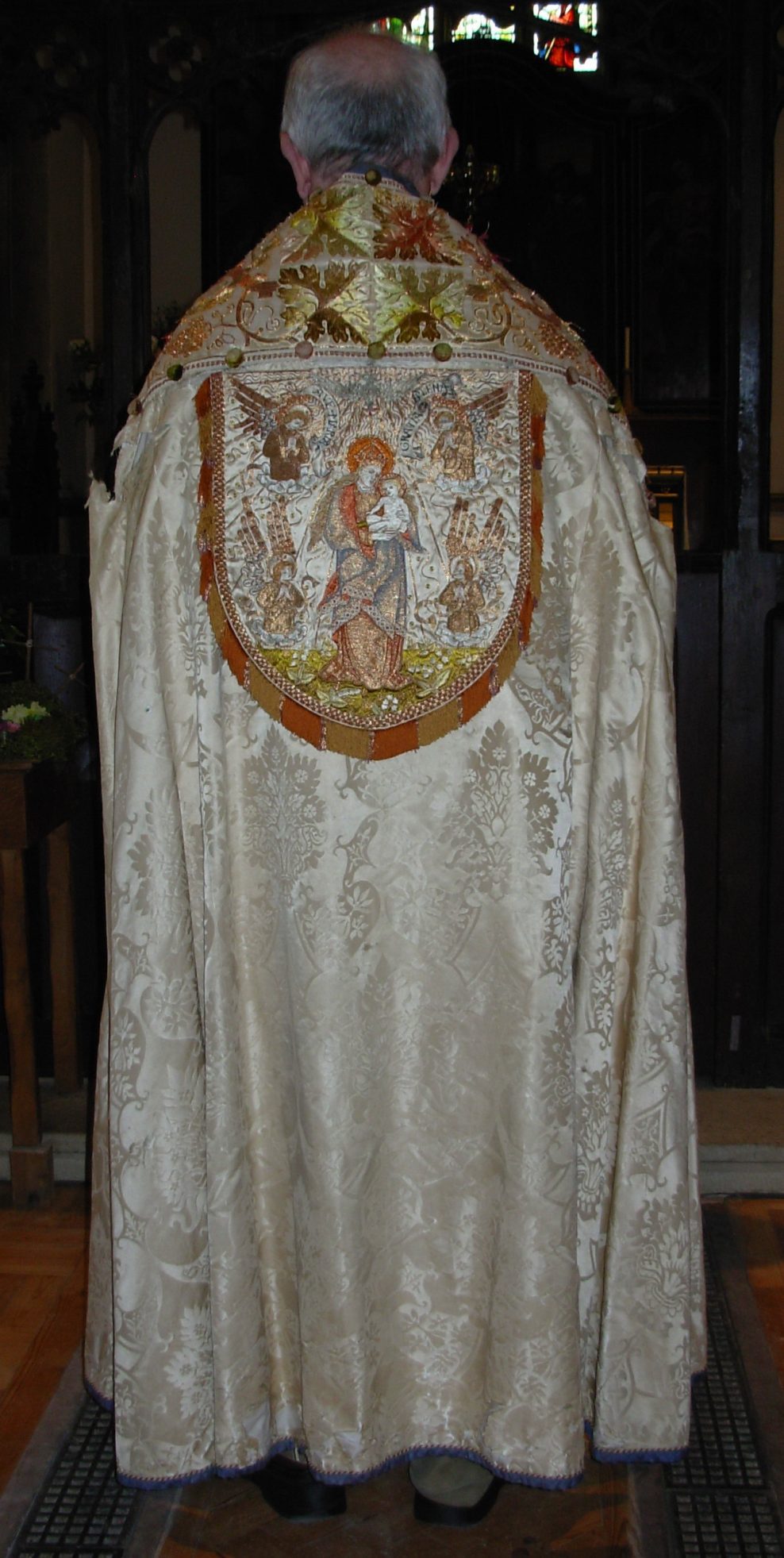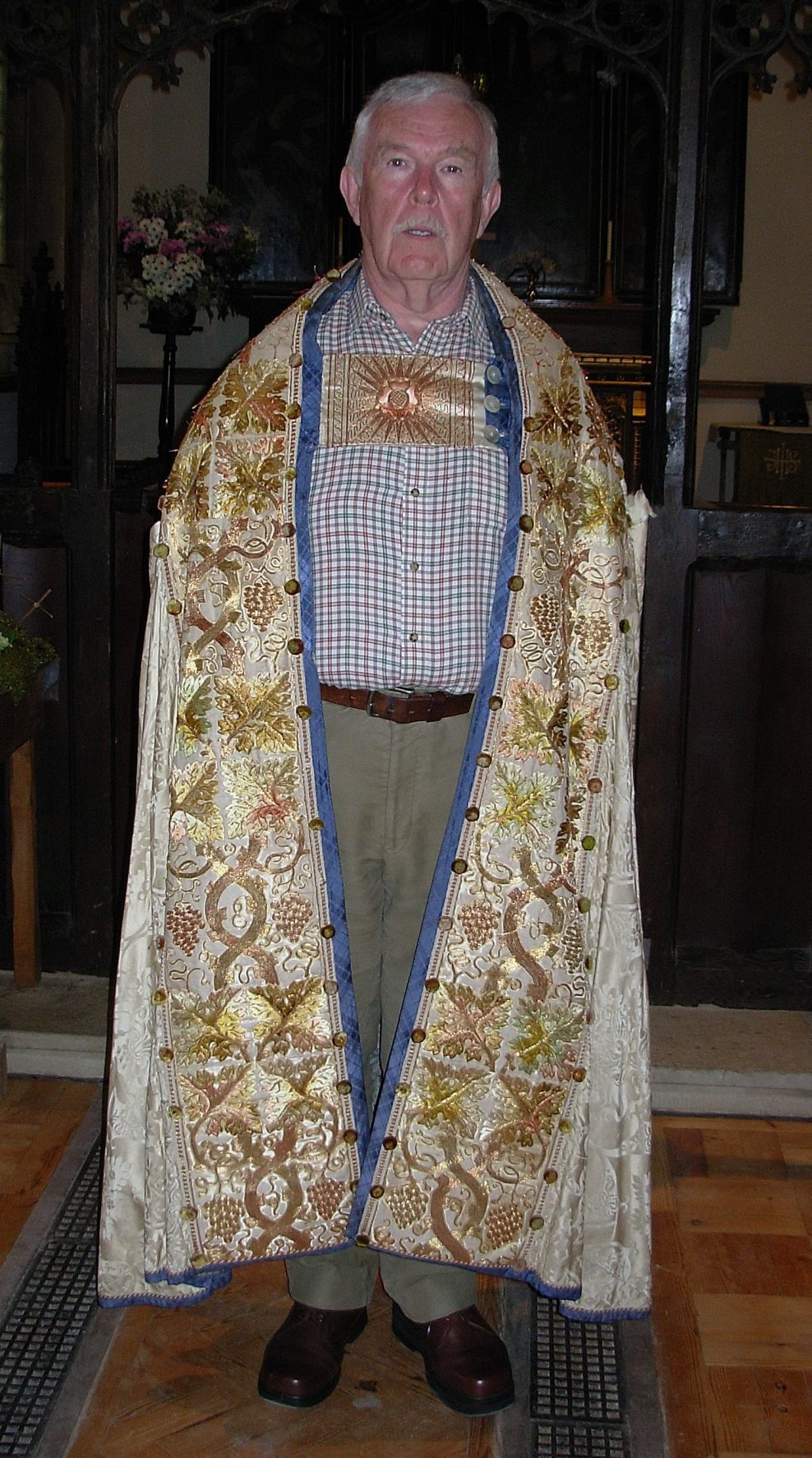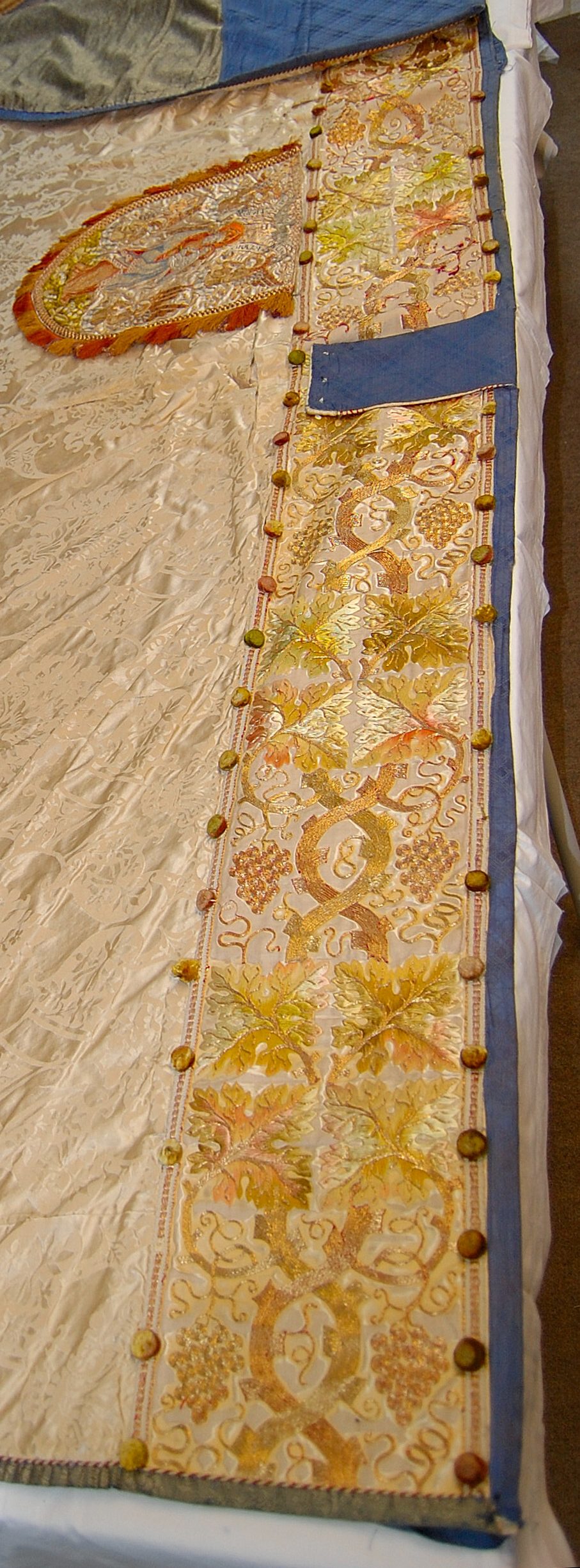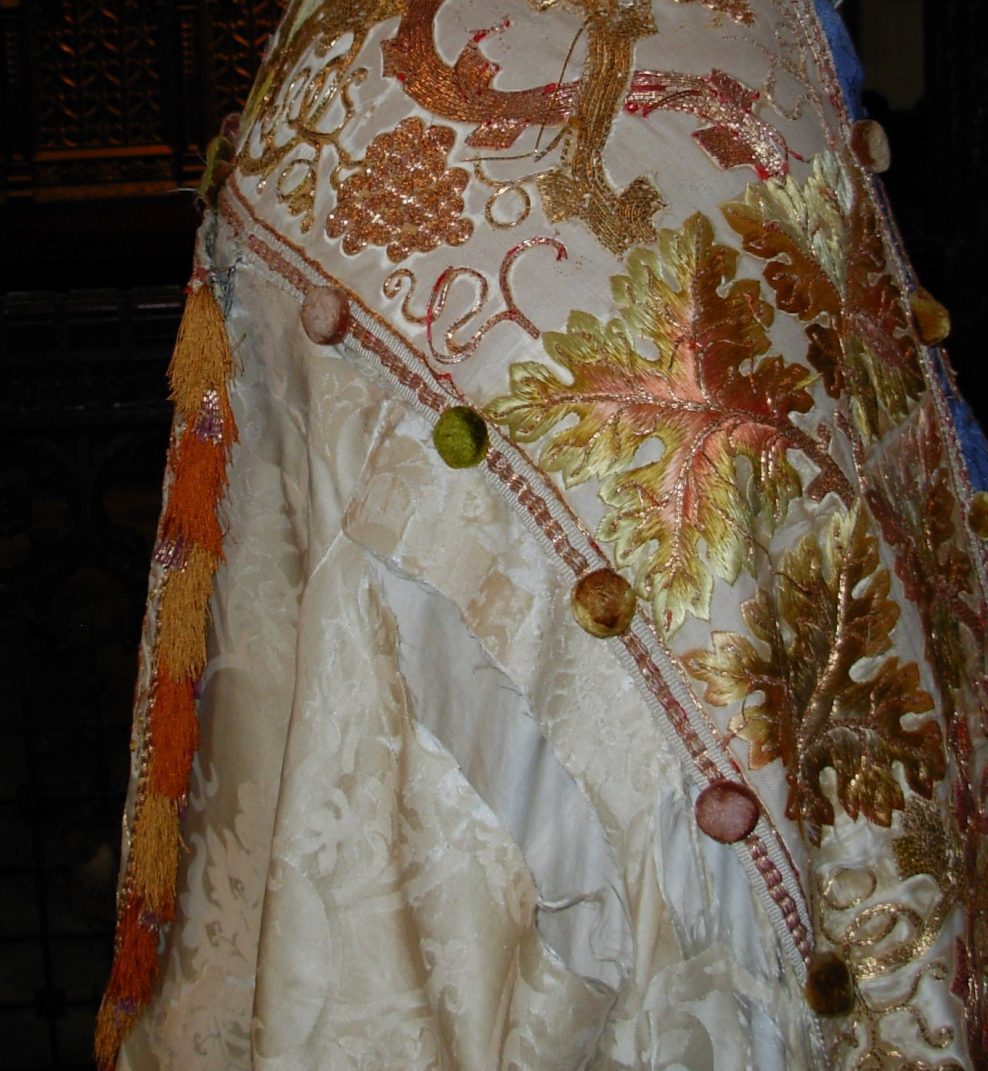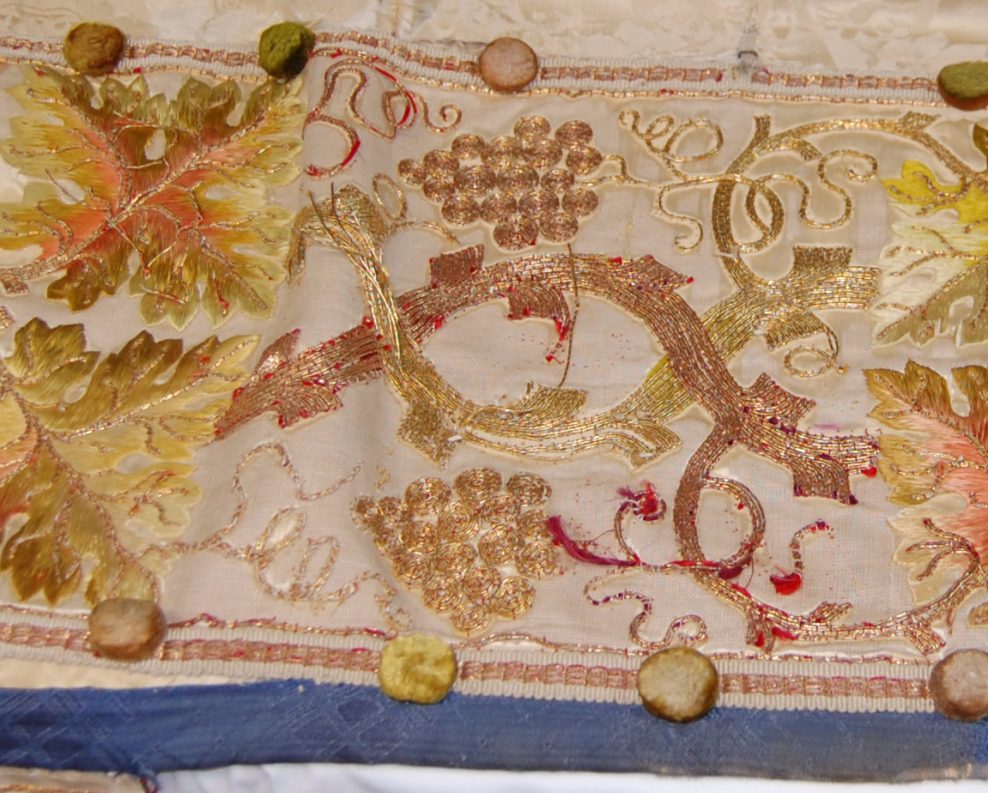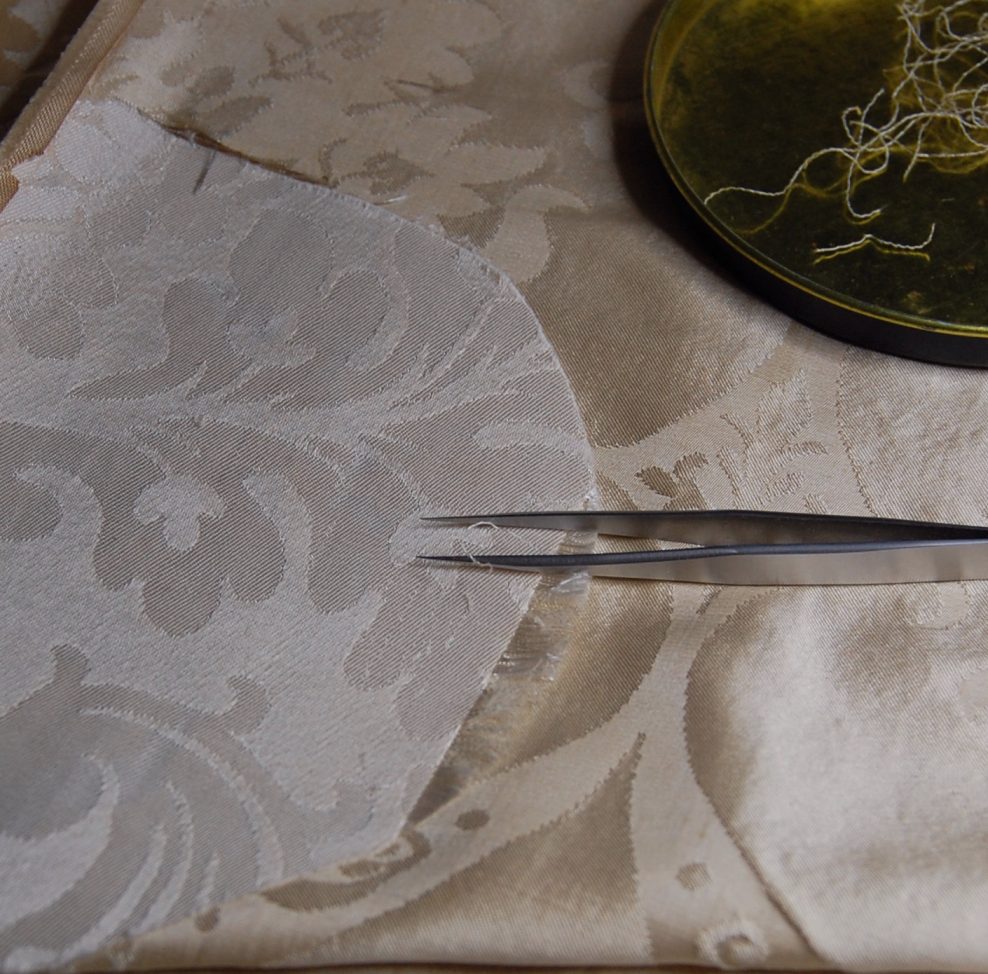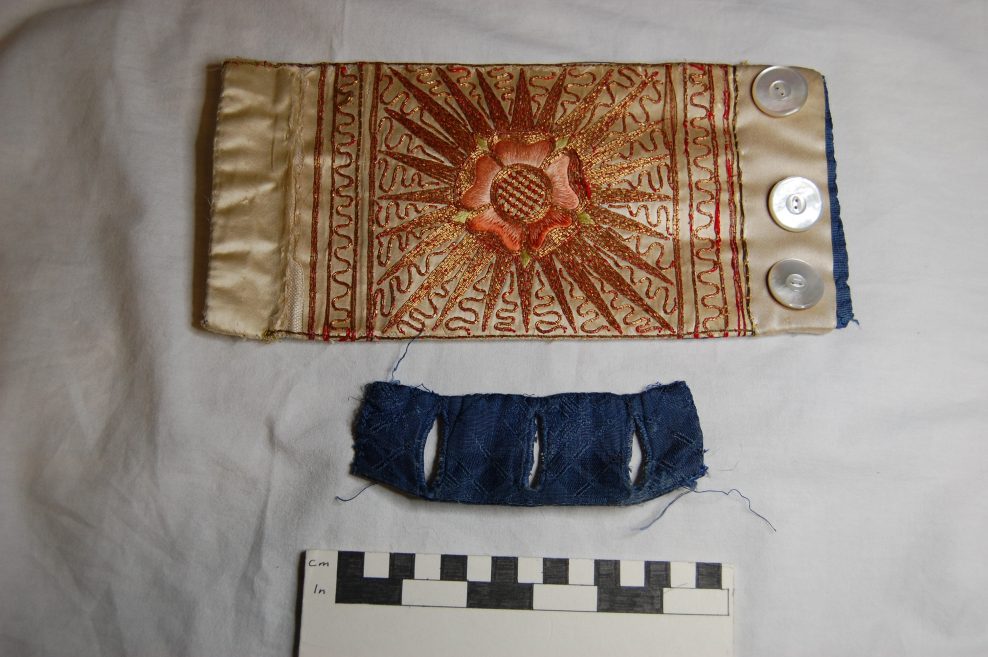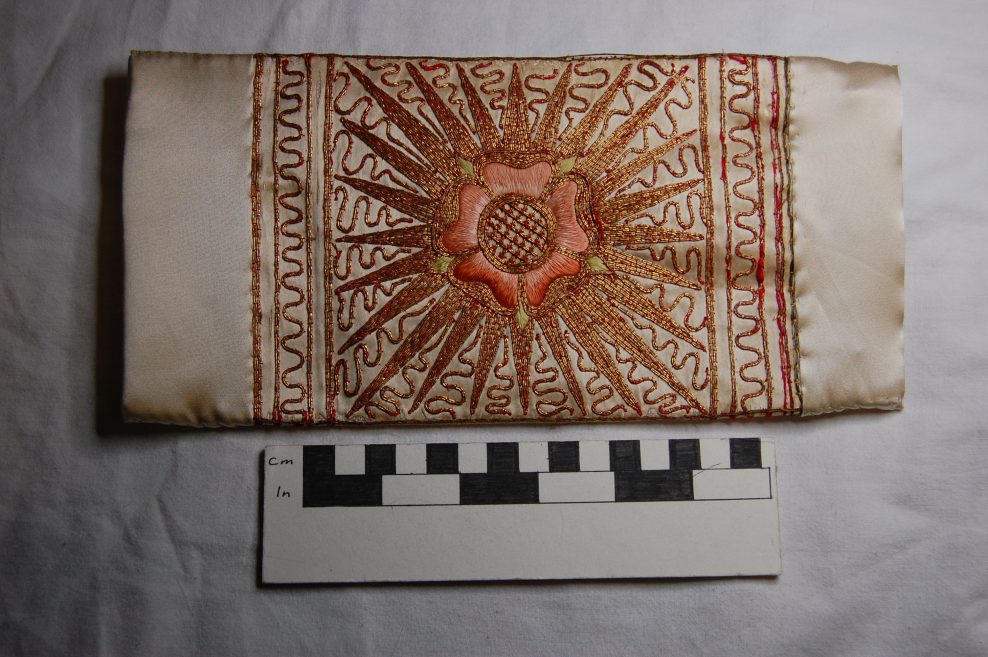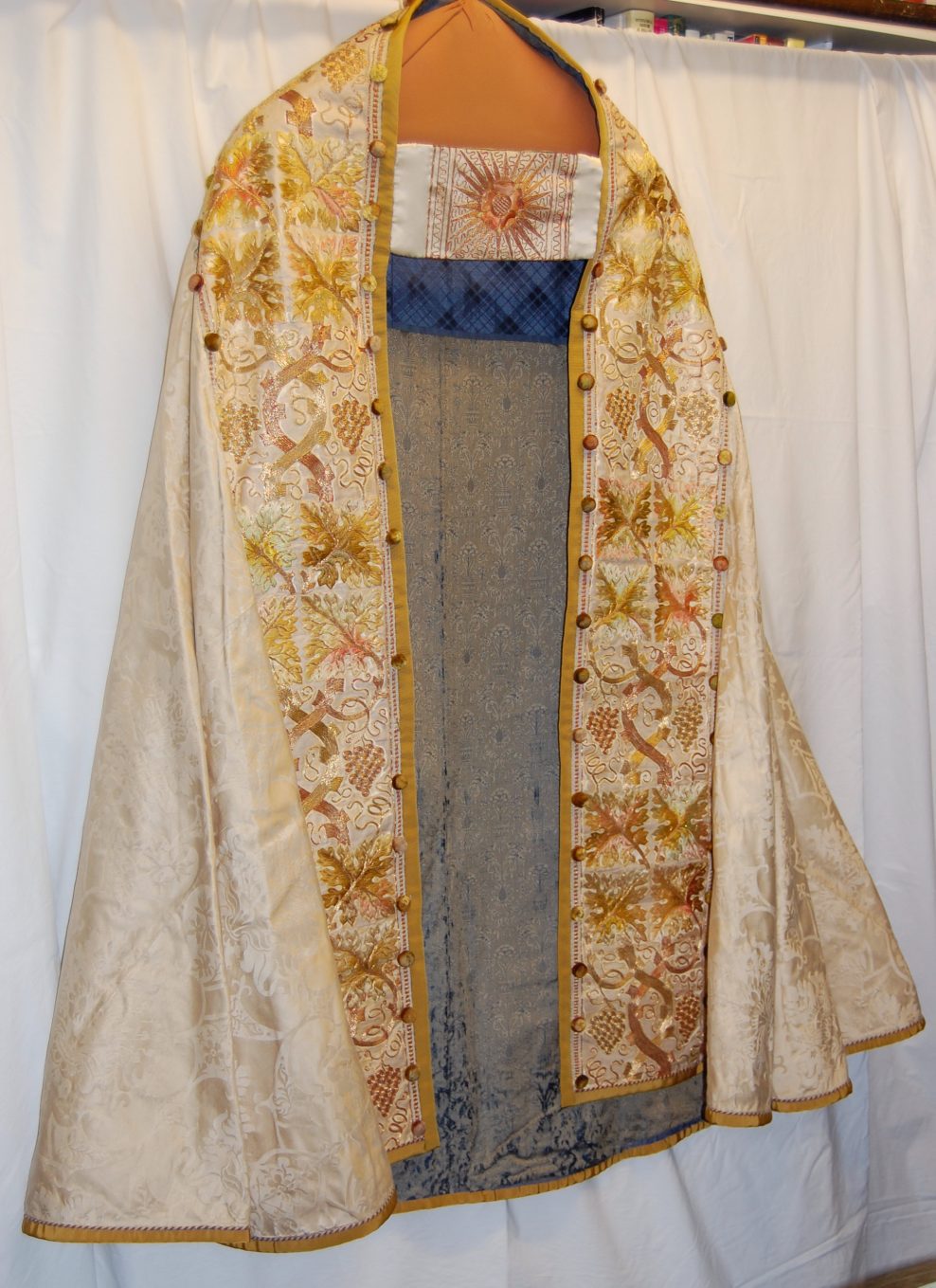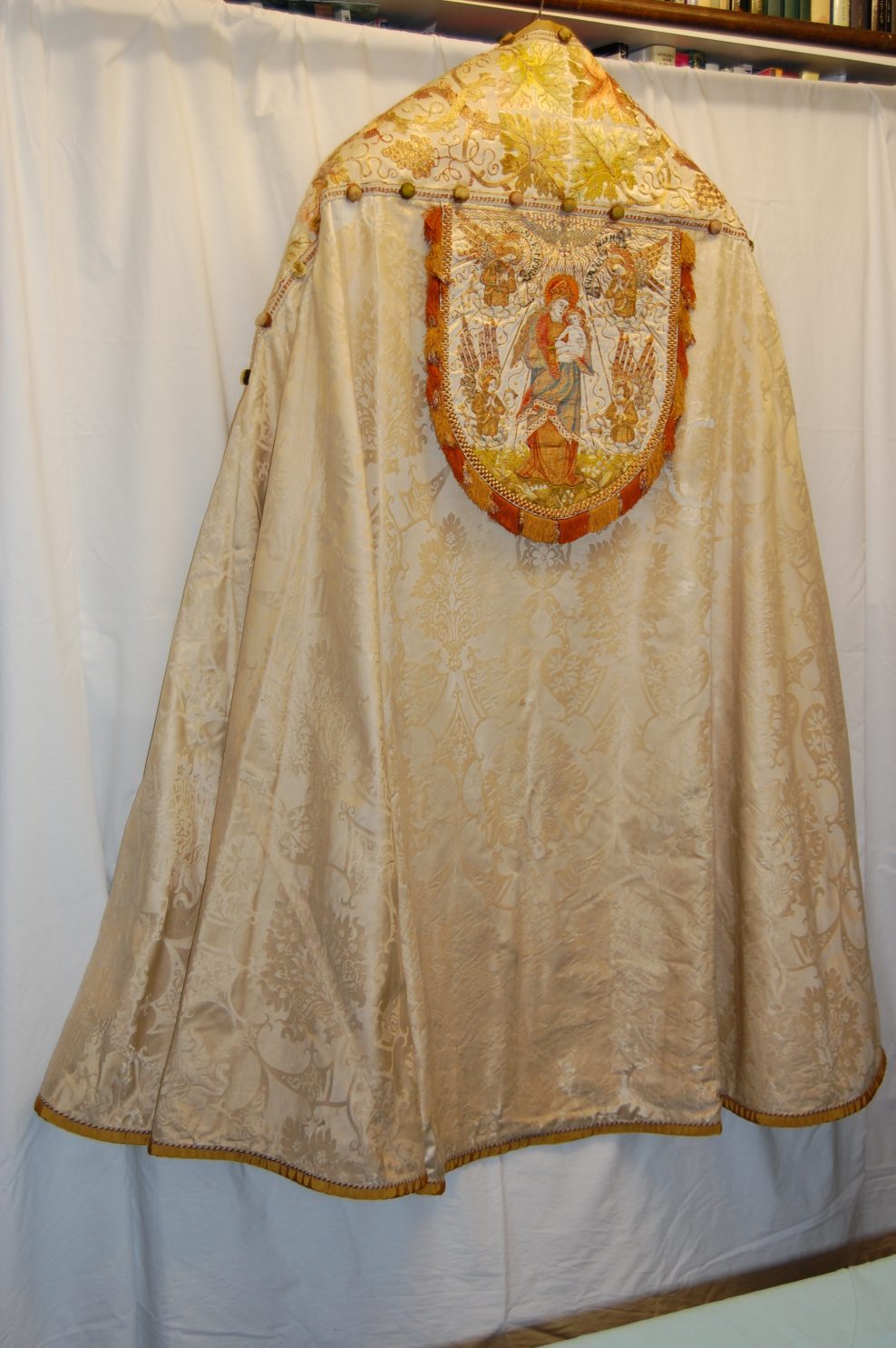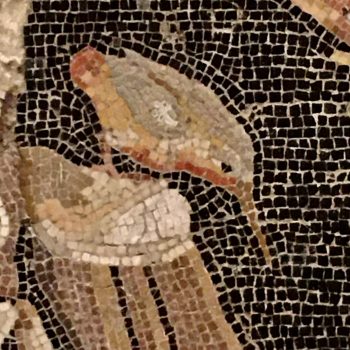Projects
Cope from Church of St James the Great, Cranham
The Church of St. James the Great, Cranham, dates from the 12th century. It was restored in large part in the 1890s and it is from this era that many of its vestments appear to date. One of the most striking vestments is a cream-coloured cope, which incorporates elements from two copes: the hood and the orphrey, while they blend well together when viewed from a distance, show marked differences in thickness of threads, colour palette and style of underdrawing.
A cope made from cream-coloured damask weave silk fabric of the pattern known as “The Gothic”, designed by Thomas Garner, supplied by Watts & Co since the 1870s. The cope has an orphrey band along the opening edge made from cream-coloured satin weave silk fabric, backed with undyed plain weave linen fabric. The orphrey bears a design of scrolling vines, leaves and grapes, worked in autumnal hues of silk floss thread and yellow metal-wrapped thread. The edges of the orphrey are trimmed with a cream and gold braid, embellished with plush-covered spherical buttons. The hood, which attaches to the back of the cope with loops and plush-covered spherical buttons, is made from cream-coloured silk satin weave fabric, embroidered with a scene showing Mary and the Christ Child, with four angels and scrolls reading “AVE MARIA” and “GRATIA PLENA”, with the Holy Spirit represented as a dove above Mary’s head. The scene is worked in polychrome silk threads, yellow and white metal-wrapped threads, and yellow metal spangles. The edge of the hood is trimmed with a fringe of gold, russet and metal-wrapped threads. Both hood and cope are lined with pale blue fabrics. The cope is interlined with plain weave undyed linen. The morse is made from cream-coloured silk satin fabric, embroidered with a rose within a starburst, worked in pink and apricot silk threads and yellow metal-wrapped threads. The morse is interlined with plain weave undyed linen and lined with blue fabric. It fastens with three buttons.
The cope was in a fragile state. It had been repaired in several areas.
The main cream fabric was in fair condition, except around the shoulders, where it was badly split. The satin weave fabric of the orphrey had largely disappeared in many areas, allowing the undyed linen interlining to show through. The floss silk embroidery and the metal-wrapped threads were largely intact, although there were areas of loss and loose threads around the shoulders. Several of the plush-covered spherical buttons were missing. The opening edges of the cope had been re-lined with a mid blue figured weave fabric, which had also been used to trim the front opening of the cope and the whole of the lower edge. The button fastening was clearly an addition. There was no obvious sign of an earlier fastening.
The brief was to clean and conserve the cope for occasional use.
Cleaning
The cope was surface cleaned with low powered vacuum suction to remove loose, particulate soiling.
Supporting
The orphrey
The stitches holding the orphrey to the lining and interlining were snipped. The straight edge of the cope with the orphrey was attached to a large embroidery frame. All loose metal wrapped threads were couched down into position with fine dyed polyester thread in a colour to match the remnants of the original stitching. Where old repair stitches held the metal wrapped threads in the wrong place or where the repair threads were thick and obtrusive, they were clipped and removed and the metal wrapped threads were repositioned and couched down with fine polyester thread.
The damask
Old repairs to the split damask fabric were removed. Stitched repairs were unpicked and the fabric was smoothed out. Adhered repairs, where patches of new damask fabric had been stuck to the reverse of tears in the original damask, were gently peeled away. In one case a patch was so firmly adhered to the damask that to peel it away would have risked creating a much larger hole. In this case, the patch was removed by withdrawing its threads one by one.
Panels of new, dyed cream silk fabric were cut to shape and slipped behind damaged areas of damask. They were held in place with support lines of running stitch worked in fine dyed polyester thread. Holed and split areas were pinned in place and then secured to the new silk patches with laid and couched fine dyed polyester threads.
As the damask fabric proved to be weak overall, with many areas of abrasion, it was decided to cover the whole of the silk damask with a layer of fine gauge nylon net, dyed to tone with the damask. The net was held to the damask with running stitches worked in fine polyester thread along all seam lines and along the outlines of the large motifs of the pattern.
The hood
The blue lining was removed from the hood, which was mounted on an embroidery frame. Splits in the silk satin were held closed with laid and couched fine dyed polyester thread. The spangles were all reinforced in their positions with stitches worked in dyed cotton thread to match the original stitches. The blue lining was resewn in place with dyed cotton thread.
The morse
The morse was detached from the cope edge together with the buttonhole tab. The buttonhole tab was set aside. The buttons were removed from the morse. The blue lining was detached. The loose embroidery threads were resewn to the morse with fine dyed polyester thread. The unembroidered silk satin ends of the morse, which were split, were covered with panels of new dyed silk satin fabric. Three brass morse hooks were sewn to the reverse of one end of the morse. The blue lining was re-sewn in place.
The blue lining
The holed and worn areas of the blue lining fabric were strengthened with laid and couched fine dyed polyester threads.
Reassembling
The hood was sewn in place on the upper back of the cope. The orphrey was resewn to the cope. The re-modelled morse was sewn to the orphrey along the right opening, three brass eyes were sewn to the corresponding place on the left opening. The blue lining fabric was pinned and stitched in place along all the outer edges of the cope. A length of old gold coloured new rayon grosgrain ribbon, selected by the churchwardens to blend with the embroidery threads used on the orphrey and the hood, was sewn over the outer edges of the cope.
